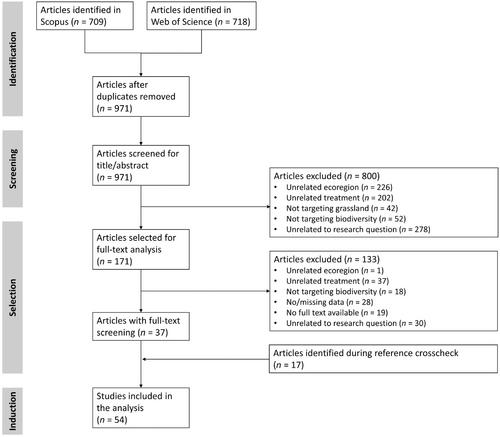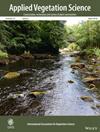Effects of extensive grazing and mowing compared to abandonment on the biodiversity of European grasslands: A meta-analysis
Abstract
Background and Objective
Extensively managed grasslands play a crucial role in sustaining biodiversity by providing habitats for a wide range of plant and animal species. The most common management is either grazing or mowing, or grasslands are abandoned. The differential effects of these management or abandoning schemes on biodiversity patterns of extensively managed grasslands have not yet been systematically evaluated with a large number of available case studies. We aimed to identify by a meta-analysis the best option for biodiversity in extensively managed grassland in Europe.
Materials and Methods
Scopus and Web of Science were systematically searched for publications that appeared before 31 January 2024 and that reported the effects of management schemes on biodiversity patterns of extensively managed grassland. Out of 971 original records, 54 full-text articles were included in the final analysis. We extracted values for mean, SD and sample size of species numbers and calculated Hedge's g to rate treatment effects.
Results
Extensive management (grazing, mowing) increased species number compared to abandonment (effect size: Hedge's g = 1.30). For plant diversity, extensive management had a strong positive effect (g = 1.78), while the effect of grazing and mowing was minor for animal biodiversity (g = 0.03). The results were recognizably influenced by the investigated plot sizes. Small plots (<10 m2) showed a much stronger effect (g = 2.19) than larger plots (g = 0.56). The type of extensive management, grazing or mowing, had no influence on the results.
Conclusion
In line with results on grasslands in general, our results underline that biodiversity of extensively managed grasslands benefits from extensive grazing or mowing. Although abandonment had a negligible effect on animal species richness, the effect on vegetation was strong. The low effect of abandonment on the fauna can be explained by the relatively short duration of the studies. The characteristics of grassland were still present, and it had not turned into forest. Extensive grazing or mowing are therefore the best options for grassland managed for conservation purposes.


 求助内容:
求助内容: 应助结果提醒方式:
应助结果提醒方式:


